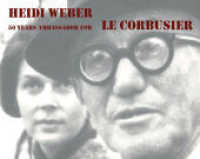Full Description
As schools progress, evolve, and change, the ways in which educational professionals lead and organize must also change. The Four Dimensions of Leadership provides readers with an invaluable guide to the latest reforms and modifications to school systems and comprehensively incorporates each major leadership principle advocated for modern-day school leaders at all levels. The text not only gives readers an opportunity to read and study leadership principles, it also provides tools to operationalize those principles and enhance their capacity to lead through the use of inventories, activities, and real life scenarios.
Applicable to courses in general leadership, instructional leadership, participatory governance, and organizational behavior, this companion text confronts the challenges of the recent redefinition of leaderships roles in schools: how it is being informed by competencies, standards, and accountability measures and how this movement forges a connection between school leaders and overall student achievement. Furthermore, the book presents a leadership preparation program that confronts the challenges and complexities of these new standards using a multi-dimensional approach: 1) Understanding Self and Others; 2) Understanding the Complexities of Organizational Life; 3) Building Bridges through Relationships; and 4) Engaging in Leadership Best Practices.
The book is a companion text to Practicing the Art of Leadership: A Problem-based Approach to Implementing the ISLLC Standards.
Contents
CONTENTS Page
Preface i
Introduction Viii
Part I Establishing a Foundation for Leadership in Schools 1 Chapter 1: Preparing Leaders for Twenty First Century Schools 1
Introduction 1
Twenty-First Century School Leadership Defined 3
Standards, Competencies, and Accountability Measures 6
The Competencies 12
Styles of Leadership for 21st Century Schools 15
Accountability Measures 22
Making the Connection: The Remaining Chapters 24
Implications for Leadership 27
Reflective Practice 29
Chapter Essentials 30
References 31
Part II Dimension 1: Understanding Self and Others 34
Chapter 2: Leading with an Understanding of Self 35
Introduction 35
The Value of Understanding Self 38
Observing the Effects of Leader Behavior 44
Scenario: The Leader Behavior of Principal Carter 45
Processes for Acquiring an Understanding of Self 53
Outcomes from Acquiring an Understanding of Self 62
Implications for Leadership 63
Reflective Practice 64
Chapter Essentials 65
References 66
Chapter 3: Leading With an Understanding of Others 69
Introduction 69
Developing an Understanding of Others 70
The Benefits of Understanding Others 78
Implications for Leadership 85
Reflective Practice 87
Chapter Essentials 88
References 89
Part III Dimension 2: Understanding the Complexity of Organizational Life 91
Chapter 4: The Social Interaction in Schools 92
Introduction 92
Organizations Defined 93
Scenario: Harpo Allen Middle School 94 Elements Contributing to the complexity of Organizational Life 97
Implications for Leadership 116
Reflective Practice 117
Chapter Essentials 118
References 119
Chapter 5: Perspective on School Structure: Chaos or Efficiency 121
Introduction 121
Organizational Structure Defined 122
The Different Types of Structure 124
Elements of Organizational Structure 84
Two Models of Structure Impacting Schools 89
The Mechanistic Bureaucratic Model 125
The Organic Humanistic Model 131
Structural Configurations for the Twenty-First Century Schoolhouse 133
Scenario: Superintendent Chooses First Year Principal to
Lead Fresh Start School 138
Implications for Leadership 151
Reflective Practice 152
Chapter Essentials 153
References 154
Chapter 6: The Principal's Role in Establishing and Retaining a
Quality Teaching Faculty 158
Introduction 158
Teacher Recruitment, Selection, Induction, and Placement 159
Instructional Supervision 165
A Mentoring Program for Teachers &nbs








